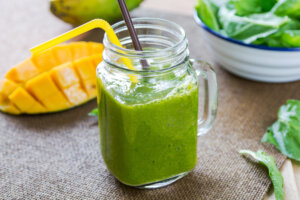It’s no secret that protein is an essential in your diet for satisfying hunger, fueling your body, and building strength. Whether you’re trying to hit specific protein goals for building muscle or simply trying to stay fuller, longer, adding more protein to your diet and daily routine doesn’t need to be time-consuming or complicated. By keeping a few protein-packed staples on your grocery list, in your fridge, and with you on the go, you’ll always have something nutritious on hand. Ready to reach your daily protein intake goals with minimal effort?
Here’s what we’ll cover in this blog:
- How many grams of protein you need each day
- What makes protein different from carbs
- Processed vs. whole foods and their benefits
- Food list to increase protein intake
- Quick, balanced meal examples
How much protein is needed each day?
If you’re thinking about how to get more protein, know that optimal protein levels will vary slightly from person to person. If you’re looking for a precise metric to help you get started with this, the Evolt body scanner is our recommended tool. The personal health and biometric data from Evolt, such as scale weight and lean muscle mass, can point to how many grams of protein are needed per day based on your body composition.
If you’re in a maintenance or muscle-building phase, you can also multiply your current weight in pounds x .7 and 1. Then, take the average of these numbers for your starting metric. For example, a 200-pound person would use 200 x .7 = 140 and 200 x 1 = 200. The average of 140 and 200 is 170 grams of protein per day. If you’re seeking to lose a substantial amount of fat or weight, you can use your ideal body weight to calculate your target protein amount.
How to add more protein to your diet: Smart meal and snack hacks
One of the simplest ways to increase protein intake is by consuming a higher amount of your go-to protein sources during meals. For example, if you’re often eating 4 ounces of meat or consuming two eggs at breakfast, increase to 6 ounces of meat and four eggs total at breakfast. You can also add extra egg whites to two eggs to keep fat content the same. Increasing the proteins you’re already eating can help you reach your target protein intake.
Between meals, eating “mini versions” of your main meals can satisfy your hunger without leaving you uncomfortably full. For example, if you love wraps, have half of a wrap as a snack. If you’re looking for extra convenience, items like Greek yogurt, protein bars, protein shakes, jerky, and hard-boiled eggs can be easy to consume on the go.
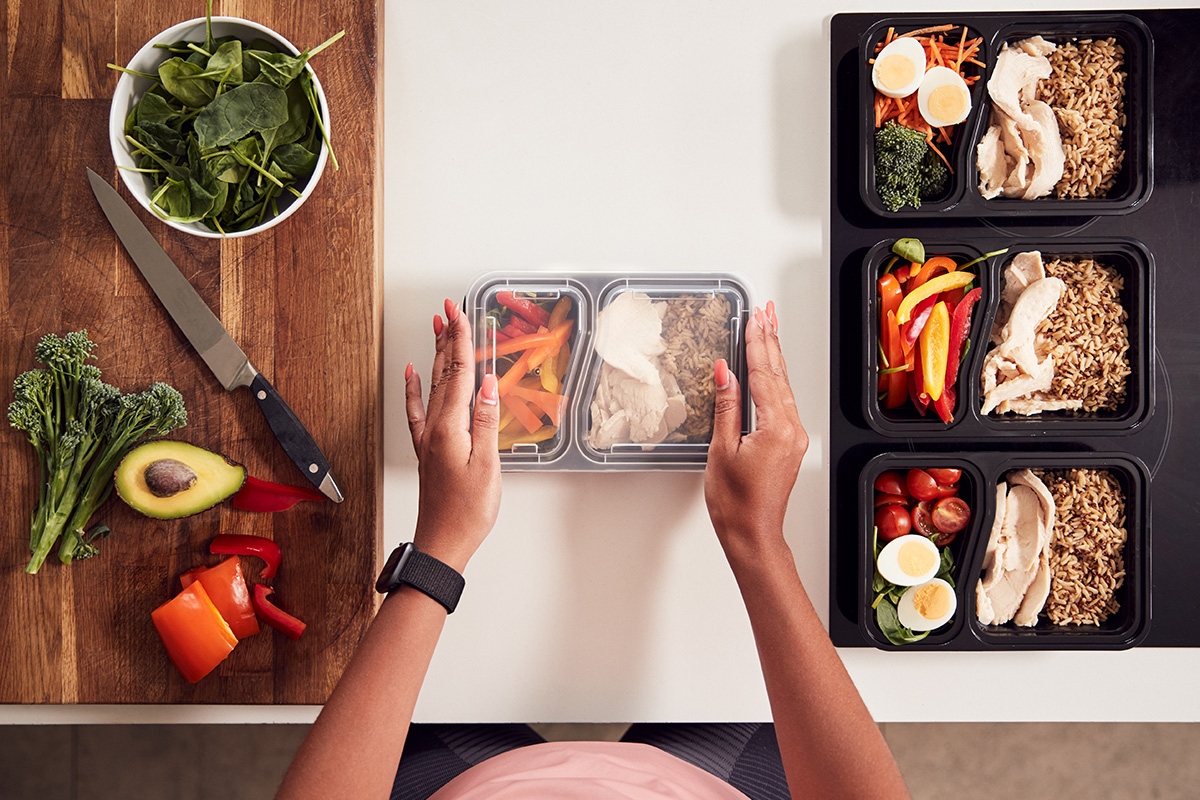
When is the best time of day to eat protein?
While there is no perfect time of day to consume protein, it’s a good idea to eat snacks and meals with protein throughout the day. This can help you consume a higher volume of protein per day while maximizing muscle protein synthesis. Consuming a protein-centric meal two to three hours before bed can also help with muscle protein synthesis during sleep.
If your protein intake is consistently met throughout the day and you feel energized and satisfied with your current distribution, it’s a good sign that you’re on the right track.
What’s the difference between protein and carbs?
Carbohydrates (carbs) and protein are a perfect pairing for those looking to maximize strength and build muscle. There are many ways to add these together — here are some snack and meal examples that combine both:
- Cereal and milk
- Protein shake and fruit
- Egg whites and potatoes
- Non-fat frozen yogurt
- Low-fat chocolate milk
- Crackers and deli meat
- Black bean pasta
- Beans/lentils
- Breaded chicken
- Quinoa
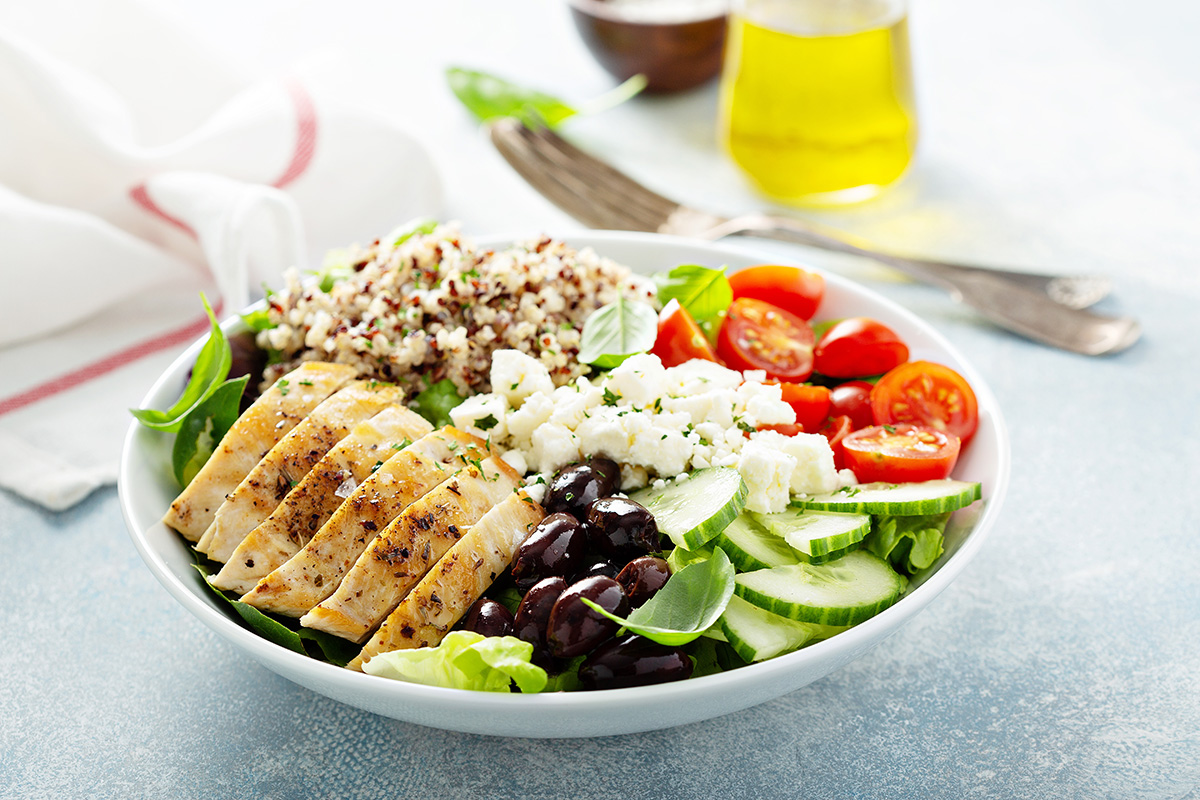
How to eat enough protein while balancing other nutrient sources
Increasing protein intake encourages feelings of fullness and satiety, which is often the goal. However, while increasing protein, it’s also important to stay hydrated and make sure you’re consuming other nutrients as well. Fiber is one to keep top of mind, as it can support gut health and prevent symptoms like constipation. Nutrition supplements like multivitamins can also be helpful.
While increasing protein, aim for a variety of nutrition-rich food sources such as fruits and vegetables, which are low in calories. Monitoring grams of fat will allow you to balance protein-to-fat ratios as you up your protein intake.
Understanding the difference between processed protein and whole sources
Complete proteins (from processed or whole foods) contain all nine essential amino acids that the body can’t make on its own. Whether you’re consuming processed vs. whole sources of complete protein, you will be getting the essential amino acid profile. These include:
- Leucine
- Histidine
- Isoleucine
- Lysine
- Methionine
- Phenylalanine
- Threonine
- Tryptophan
- Valine
The differences between processed protein options and whole sources come down to their nutrient density, meaning some of the whole protein sources may naturally contain vitamins and minerals. In processed sources, they can also contain these vitamins and minerals, but they would come from fortification. This means the nutrients are added in.
Whole foods like eggs, fish, chicken, etc. do not contain added ingredients like preservatives or additives to maintain freshness. As you figure out how to get more protein in a way that works for you, processed foods can be a convenient option for consuming more protein throughout the day while curbing hunger.
What are the benefits of eating protein from whole sources?
Whole food protein sources are typically dense in nutrients, making them an efficient way to achieve your nutritional goals. These protein sources are rich in vitamins and minerals, and may have a higher bioavailability. This means the nutrients are well-absorbed and actively utilized by the body rather than going to waste. For example, dairy products provide calcium, phosphorus, and Vitamin D. Legumes and lentils provide fiber, folate, and polyphenols. Meats and fish provide iron, zinc, B12, and omega-3 fatty acids.
Protein also has the highest thermic effect of food (TEF) for digestion, which means we burn energy and calories to digest protein. Whole food proteins can require more metabolic effort than processed proteins.
Choosing whole food sources of protein also helps manage macronutrient intake. For example, if you eat a whole food source of protein like egg whites or chicken breast, you’re primarily consuming protein. If you eat a protein bar, you are consuming protein, as well as fats, carbs, sugar, and possible artificial sweeteners or other stabilizers for freshness. This can be helpful to keep in mind when deciding how to add more protein to your diet and how to make choices that support your health and nutritional goals.
3 things to keep in mind with protein bars
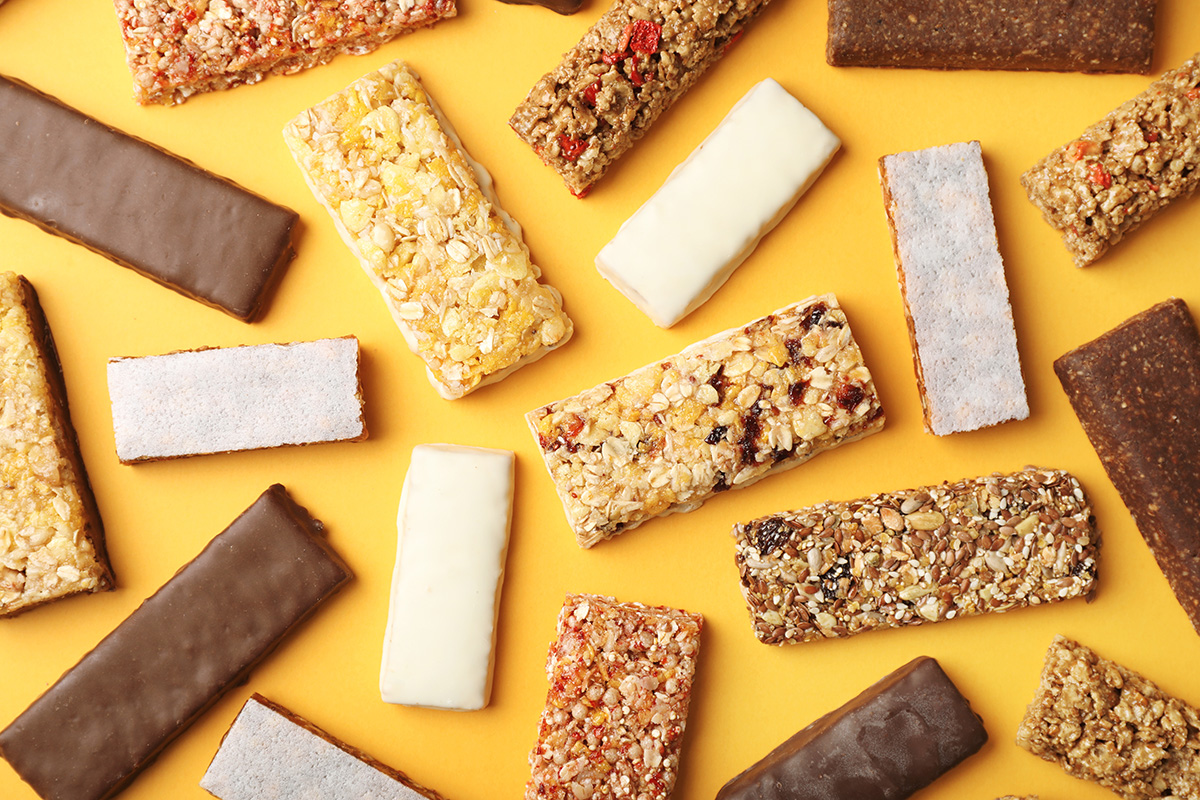
Protein bars can be a convenient, easy snack with no preparation required. When opting for a protein bar, consider what you’re using it for. Is it simply intended to increase protein intake? Is it to be a snack between meals? Is it supposed to replace a meal entirely? Or is it for a sweet treat? Being clear about the reason can help when making decisions about which one to purchase. Here are a few more helpful tips:
- For a meal replacement, you may want a high-calorie bar. For a snack between meals, you may want to find a bar lower in calories. This may be in the 100-300 calorie range. The protein amount in the bar is also important — aim for a bar with at least 15 grams of protein.
- Understand how you respond to sugar alcohols. These include: sorbitol, maltitol, and xylitol, and allow for sweetness in the bar without adding more sugar. While sugar alcohols don’t impact everyone, some people experience GI bloating or gas. Some may prefer to have real sugar over sugar alcohols.
- Look at fat content and saturated fat. It’s a best practice to keep saturated fat consumption to a low level. When comparing bars, don’t forget to take a look at the saturated fat. Aim to keep daily total fat below 20% to 35% of daily calories, and saturated fat under 10% of daily calories, as suggested by the Dietary Guidelines for Americans.
How to get more protein: Recommended food staples
One of the best (and easiest) ways to add more protein to your diet is to choose foods that naturally have the highest amounts. The list below offers a guide to foods that are highest in protein (based on 100 grams). As you decide how to increase protein in your meals and how to add more protein to your diet, use this list to plan your grocery shopping:
- Chicken breast: ~30 grams of protein, 195 calories, 7.72 grams of fat
- Turkey breast: ~30 grams of protein, 104 calories, 1.66 grams of fat
- Pork loin: ~28 grams of protein, 247 calories, 14.59 grams of fat
- Beef: ~26 grams of protein, 288 calories, 19.54 grams of fat
- Canned tuna: ~25 grams of protein, 116 calories, 0.82 grams of fat
- Salmon: ~22-25 grams of protein, 139 calories, 4.3 grams of fat
- Atlantic cod: ~24 grams of protein, 82 calories, 0.67 grams of fat
- Seitan: ~21 grams of protein, 126 calories, 0.6 grams of fat
- Tempeh: ~20 grams of protein, 193 calories, 10.8 grams of fat
- Firm tofu: ~17-20 grams of protein, 62 calories, 2.7 grams of fat
- Greek yogurt: ~15-20 grams of protein, 117 calories, 9.19 grams of fat
- Lentils: ~18 grams of protein, 353 calories, 1.06 grams of fat
- Edamame: ~11 grams of protein, 121 calories, 5.2 grams of fat
Minimal prep foods for the balanced plate framework
What is the balanced plate framework?
The balanced plate framework is a simple guide for creating nutritious, well-rounded meals. It divides your plate into portions that balance macronutrients and essential food groups. This is easiest to follow at larger meals such as lunch and dinner. For smaller meals such as breakfast or snacks, prioritizing protein and one category (either produce or carbohydrates) may be easiest.
To simplify it, we’ve included a list of easy-to-prepare foods below that will help take the guesswork out of it. We encourage you to use this as a guide and make adjustments based on what’s best for you!
How to increase protein in your meals using the balanced plate framework:
- 1⁄4 plate protein (~3-5 oz or ~1 palm-sized serving)
- 1⁄4 plate carbohydrates (~1⁄2 to 1 cup cooked carbohydrates)
- 1⁄2 plate produce (~1-2 cups vegetables and/or fruits)
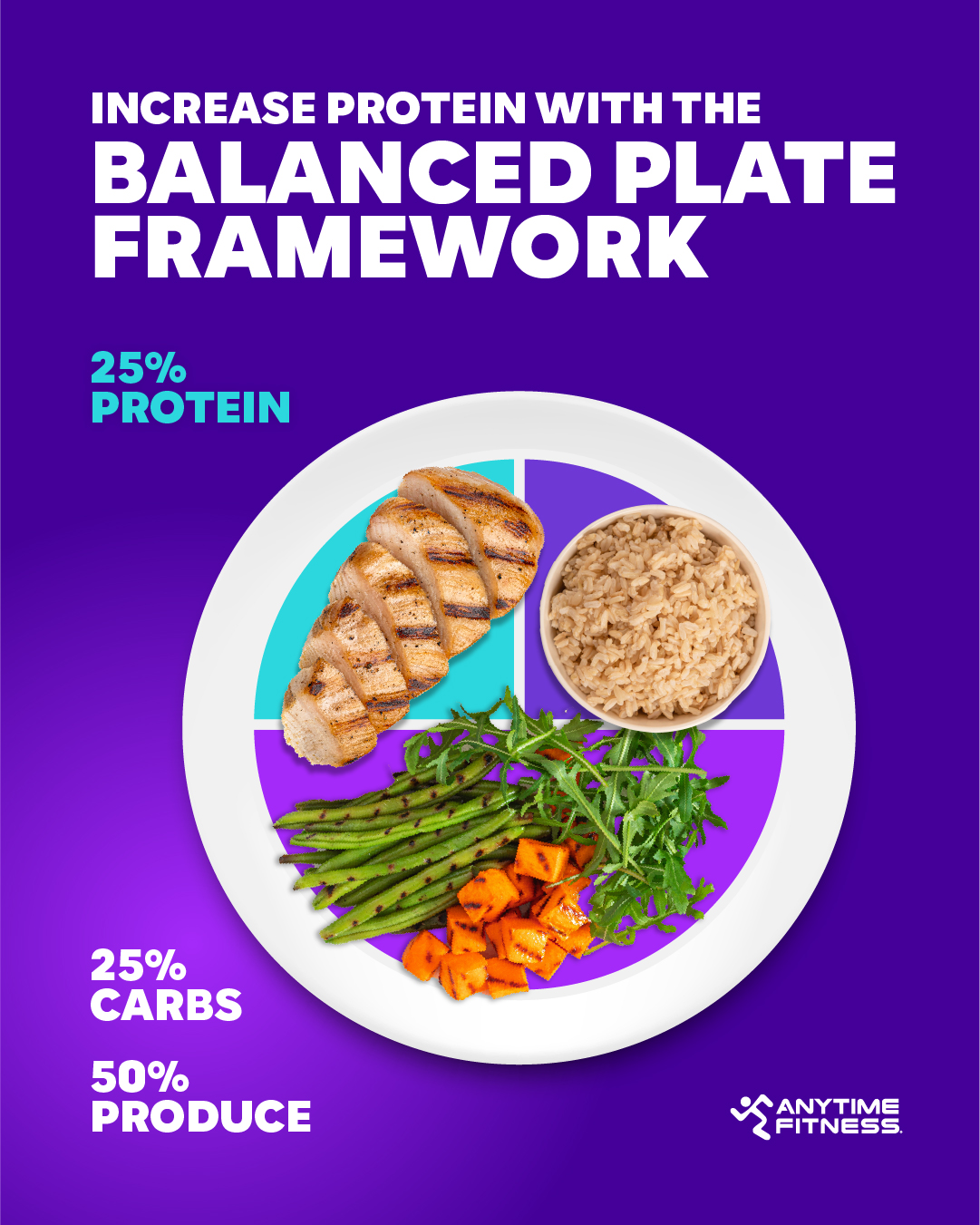
Use these fridge staples to increase protein intake
1. Chicken and eggs
- Rotisserie chicken
- Pre-cooked grilled chicken breast (fresh or frozen)
- Pre-cooked hard-boiled eggs
- Deli turkey/chicken
- Frozen turkey burgers
2. Beef, lamb, and pork
- Frozen meatballs (beef, lamb, etc.)
- Beef jerky
- Ready-to-heat/eat pulled pork
3. Fish
- Tuna packets/cans
- Canned salmon and sardines
- Fresh fish (tilapia, white fish, or smoked salmon)
- Pre-cooked shrimp
- Frozen baked fish filets (tilapia, cod, etc.)
4. Dairy
- Low-fat Greek yogurt
- Low-fat cottage cheese
- Cheese sticks and cheese squares
- Premade protein shakes
5. Vegan and vegetarian options
- Prepackaged shelled edamame
- Precooked tofu cubes/slices
- Precooked lentils
- Canned chickpeas
- Premade protein shakes
Stay balanced: Easy carb, vegetable, and fruit ideas
Minimal prep carbohydrates
- Frozen/minute rice or quinoa
- Microwaved baked potato or sweet potato
- Precooked lentils
- Whole grain crackers
- Frozen/canned corn
- Oats
Minimal prep vegetables
- Salad kits
- Prewashed salad greens (baby greens, arugula, spinach, etc.)
- Fresh, prepped vegetables (washed/chopped broccoli, cauliflower, etc.)
- Frozen vegetables (broccoli, cauliflower, cauliflower rice, stir fry blends, kale, etc.)
- Bell pepper strips
Minimal prep fruit
- Oranges
- Clementines
- Pears
- Bananas
- Frozen fruit (berries, cherries, peaches, etc.)
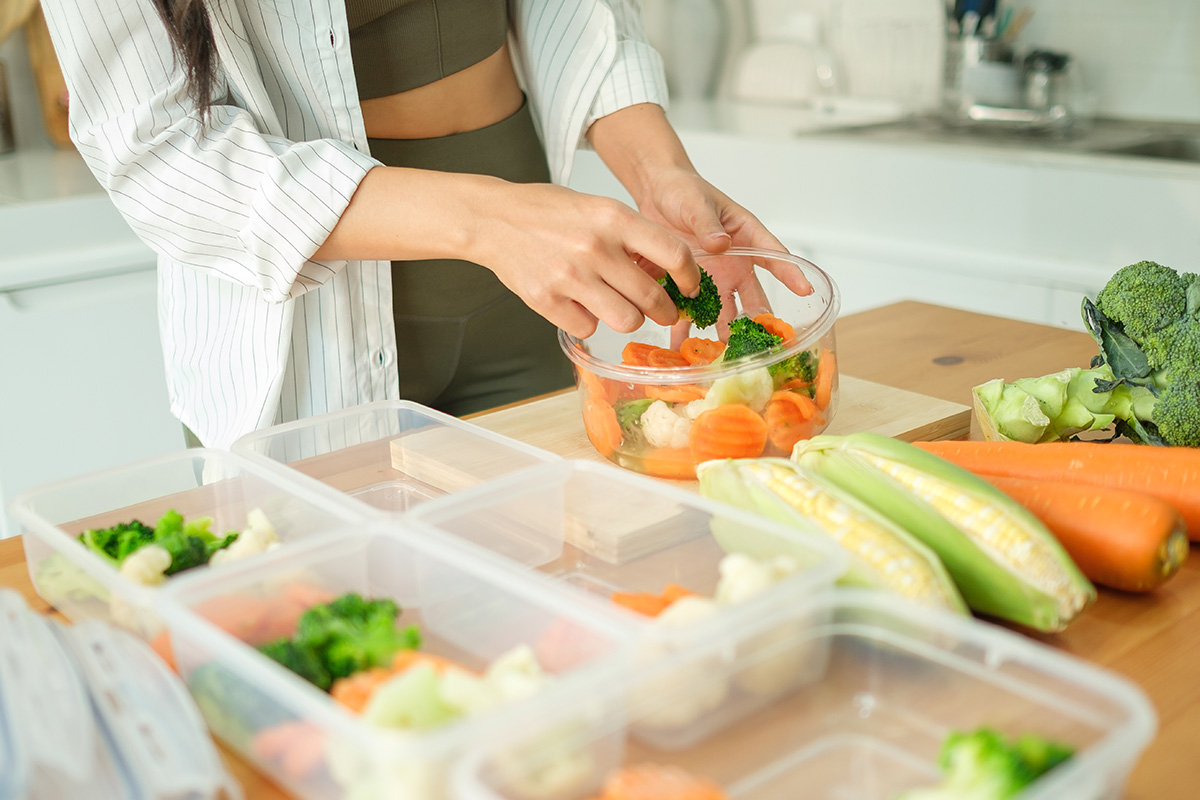
Quick meal ideas: How to add more protein to your diet throughout the day
Snacks (Focused on protein and produce or carbs):
- Greek yogurt or cottage cheese + berries/fruit
- Turkey roll-ups + whole grain crackers
- 1-2 hard boiled eggs + baby carrots
Breakfasts (Focused on protein and produce or carbs):
- Homemade smoothie (include 1 scoop protein powder + 1 cup frozen fruit + 1 small banana + 1 cup frozen spinach + 1 cup milk of choice + 1 Tbsp. peanut butter powder)
- Hard-boiled eggs + whole grain toast + side of fruit
- Premade protein shake + side of fruit
Lunches (Using the balanced plate framework):
- Rotisserie chicken + salad kit + chickpeas or side of whole grain crackers
- Precooked shrimp + minute rice + frozen stir fry vegetables
- Tuna packet on whole grain toast + small side of salad greens
Dinners (Using the balanced plate framework):
- Frozen turkey burger + microwaved baked potato + air-fried frozen vegetables
- Frozen baked fish + minute rice + salad kit
- Rotisserie chicken + frozen quinoa/rice + easy salad with greens and cherry tomatoes
Low-effort cooking methods for foods that need reheating:
- Air fry
- Microwave
- Toaster oven
A final word on smart snacking with protein
There’s more than one way to add protein into your diet — often, small steps can go a long way to help you reach your intake goals. By identifying a few essentials that you enjoy and that balance your diet, you’ll be ready to whip up a healthy protein-packed meal or snack any time.
Protein? Check. Next up: Recovery. Access our expert tips to build strength, work hard, and rest hard now.

